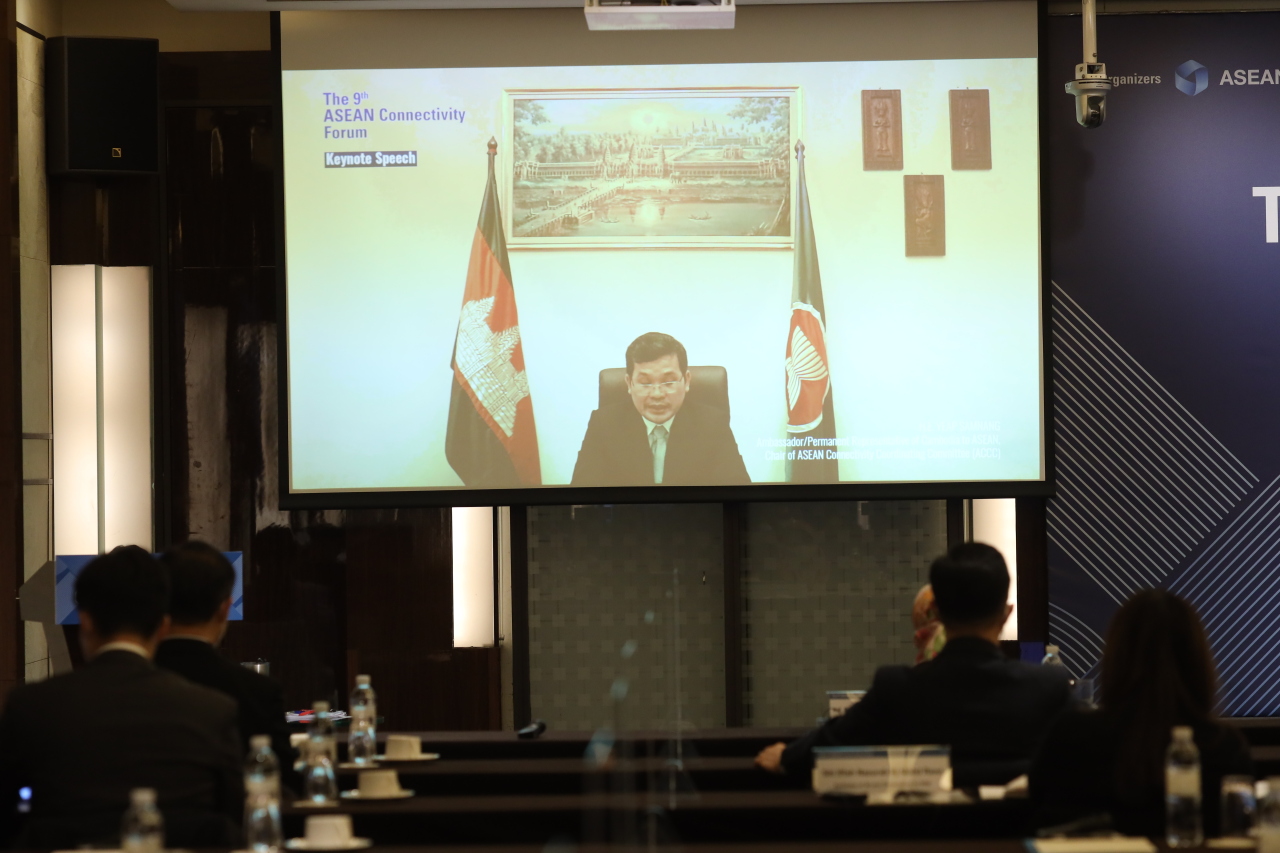Connectivity is key to improving, development, trade and other benefits to ASEAN, and putting the group’s master plan into action is key to achieving it, according to Cambodia, which is chairing the bloc this year.
The conversion from key actions under the Master Plan on ASEAN Connectivity (MPAC) 2025 into projects is was crucial to connectivity, Cambodia Ambassador to ASEAN Yeap Samnang said in a keynote speech at the 9th ASEAN Connectivity Forum held Jan. 18-19.
MPAC 2025 was adopted at the 28th ASEAN Summit in 2016, a year after the establishment of the ASEAN community, to support regional integration in five strategic areas: sustainable infrastructure, digital innovation, seamless logistics, regulatory excellence, and mobility of people.
The leaders of ASEAN member states and Korea emphasized stronger cooperation on connectivity including smart cities during the 22nd ASEAN-ROK Summit held in November last year.
Cambodia, which is chairing ASEAN in 2022, stresses cooperation on physical and digital connectivity to make ASEAN an attractive trade and investment partner.
Samnang introduced the theme of ASEAN in 2022 as “ASEAN A.C.T.: Addressing Challenges Together,” which underscoring the common will in ASEAN’s collective endeavor to address and overcome challenges.
The online forum focused on sustainable infrastructure and digital innovation.
Samnang strongly encouraged stakeholders, with support of the ASEAN Secretariat, to continue vital work to meet strategic initiatives under the MPAC 2025.
According to Samnang, physical, institutional and people-to-people connectivity promoted economic growth, narrowed development gaps, enhanced regional competitiveness and promoted deeper ties among ASEAN peoples, ASEAN members and rest of the world.
“Since its adoption, the implementation of MPAC 2025 has progressed as the ASEAN Connectivity Coordinating Committee (ACCC)’s engagement and coordination has intensified with the Lead Implementing Bodies, National Coordinators, National Focal Points and the relevant ASEAN Sectoral Bodies,” he said.
Samnang added that engagement had been expanded and strengthened with external MPAC 2025 key stakeholders, ASEAN Dialogue Partners and external partners, multilateral organizations, development banks sub-regional organizations and the private sector.
He highlighted notable progress and possible ACCC deliverables for 2022, but he stressed that projects still had to be completed, and financing of priority projects had to be improved.
According to Samnang, ASEAN needs more than $100 billion of infrastructure investment per year. To raise such amounts, policymakers would have to mobilize all potential sources of capital and consider innovative schemes for infrastructure financing, particularly those involving the private sector.
Samnang suggested public-private partnerships as a significant approach clearly identified in the MPAC 2025.
“Effective PPP development requires effective regulatory and strategic structures to be in place. Therefore, the existing legal frameworks which may have an impact or effects on the PPP projects should be adjusted and reinforced,” he said.
The Cambodian ambassador also recalled the ASEAN Leaders Statement on ASEAN Connectivity of Oct. 24 2009, and called for regional connectivity within ASEAN to benefit all ASEAN member States through enhanced trade, investment, tourism, people-to-people exchanges, and development.
Meanwhile, a panel discussion also took place on the way forward for ASEAN connectivity in the post-COVID era and on ways to promote bankability of various connectivity projects.
The panel discussion included experts from the ASEAN Secretariat, the United Nations Economic and Social Commission for Asia and the Pacific, Korea Office of Multilateral Investment Guarantee Agency, and the Export-Import Bank of Korea.
The 9th ASEAN Connectivity Forum was co-hosted by the ASEAN-Korea Center and International Contractors Association of Korea (ICAK) and supported by the Foreign Ministry and the ASEAN Secretariat.
By Sanjay Kumar (
sanjaykumar@heraldcorp.com)








